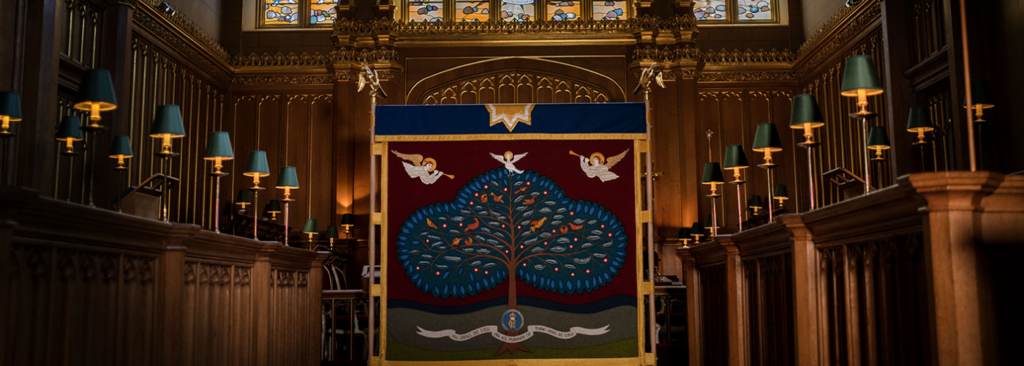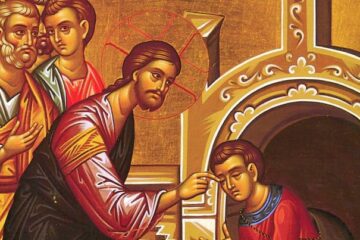Did you know that the Coronation of King Charles III, despite being a service primarily associated with the Church of England, featured several elements related to the Orthodox Church?
King Charles, whose Coronation was held on Saturday (May 6th), holds a connection to the Greek Orthodox Church through his late father Prince Philip, Duke of Edinburgh, who was born on the island of Corfu in 1921 and was baptized into the Greek Orthodox Church. His mother became a nun in the Orthodox Church and assisted many people throughout her life. Prince Phillip later joined the Church of England, of which his son, King Charles III, is also a member.
King Charles III has visited Greece on several occasions and has shown an interest in the country’s culture and history, including its Orthodox Christian heritage. In 2018, he visited Mount Athos, where he met with Orthodox monks to learn about their way of life and spiritual practices.
This connection to the Orthodox Church was evident through several elements of the coronation service:
Byzantine Chant featured during the service
One of the many choral pieces featured during the coronation was a performance of Byzantine chant led by Alexander Lingas. The ensemble, which was created specifically for the coronation, chanted Psalm 71, which begins: “O God, give Thy judgment to the king, and Thy righteousness to the son of the king, That he may judge Thy people with righteousness, and Thy poor with judgment.”
Alexander Lingas, who was raised in a Greek Orthodox Family, is the founder and artistic director of the Byzantine vocal ensemble Cappella Romana, which has recorded several albums of Orthodox music. He is a scholar of Byzantine and other Orthodox liturgical music, and is currently a Professor of Music at City University of London, where he teaches courses on musicology, ethnomusicology, and Byzantine music.
Anointing Oil from the Orthodox Patriarch of Jerusalem
The anointing oil used during the Coronation ceremony was consecrated oil prepared in Jerusalem. It was made by the Patriarch of Jerusalem, who is considered the guardian of the Holy Sepulchre, the site where Jesus was crucified, buried, and resurrected.
The practice of using anointing oil dates back to the apostles and the early Church, and symbolizes the power of the Holy Spirit, who sanctifies and blesses the recipients. Due to its connection to the Holy Sepulchre, this anointing oil from Jerusalem has often been used in significant sacramental ceremonies such as royal baptisms.
During the coronation of King Charles III, the Archbishop of Canterbury used this holy oil to anoint the King. It was a particularly intimate part of the ceremony in which, behind the cover of an ornate screen (more info below), the King removed his robes in order to receive the anointing, before being dressed again in robes of gold before his crowning.
Anointing screen designed by Orthodox Christian Iconographer
The screen used during the anointing of King Charles was designed by an Orthodox iconographer, Aidan Hart. At the front, it features an image of a tree with leaves featuring the names of the Commonwealth nations.
Three angels fly above the tree, and at its base a banner reads, “All shall be well, and all manner of things shall be well,” a phrase attributed to the 14th century English Christian mystic and nun Julian of Norwich. This famous phrase appears in Julian’s book “Revelations of Divine Love” in several places, including Chapter 27, where she also writes: “And so, in my soul’s sight, endlessly meaning, I saw that all our Lord’s works are good, and on this basis I understood that everything that is done will be well.”
The screen’s designer, Aidan Hart is a well-known Orthodox iconographer based in the United Kingdom, who began studying Orthodox iconography in the mid-1980s, and in 1990 traveled to Greece to study with traditional iconographers in Athens and Mount Athos. He has created icons for churches, monasteries, and private collections around the world, and has written several books on Orthodox iconography, including “Techniques of Icon and Wall Painting,” “Beauty, Spirit, Matter: Icons in the Modern World,” and “The Door of Paradise: Symbolism in Georgian Church Architecture.”
Icons at Westminster Abbey
Though not specifically related to the coronation, viewers of the coronation service may have noticed icons in the Byzantine style on two pillars toward the front of Westminster Abbey, featuring the Mother of God with Christ on the left, and Christ on the Right. The icons were written by iconographer Sergei Konstantinovich Fyodorov.
According to Westminster Abbey, the icons were introduced “to provide a prominent Christian symbol of the historical Church of Christ, reminding visitors of the Abbey’s main function as a working and worshipping Church. They also create a point where visitors can light votive candles and say prayers.”
While these elements remind all of the beauty and sanctity of the Christian faith it is in the Orthodox Church that we find the fullness of the original faith given to the Apostles and passed down through time unaltered to the faithful.
Photo credit HUGO BURNAND/ ROYAL HOUSEHOLD 2023




0 Comments